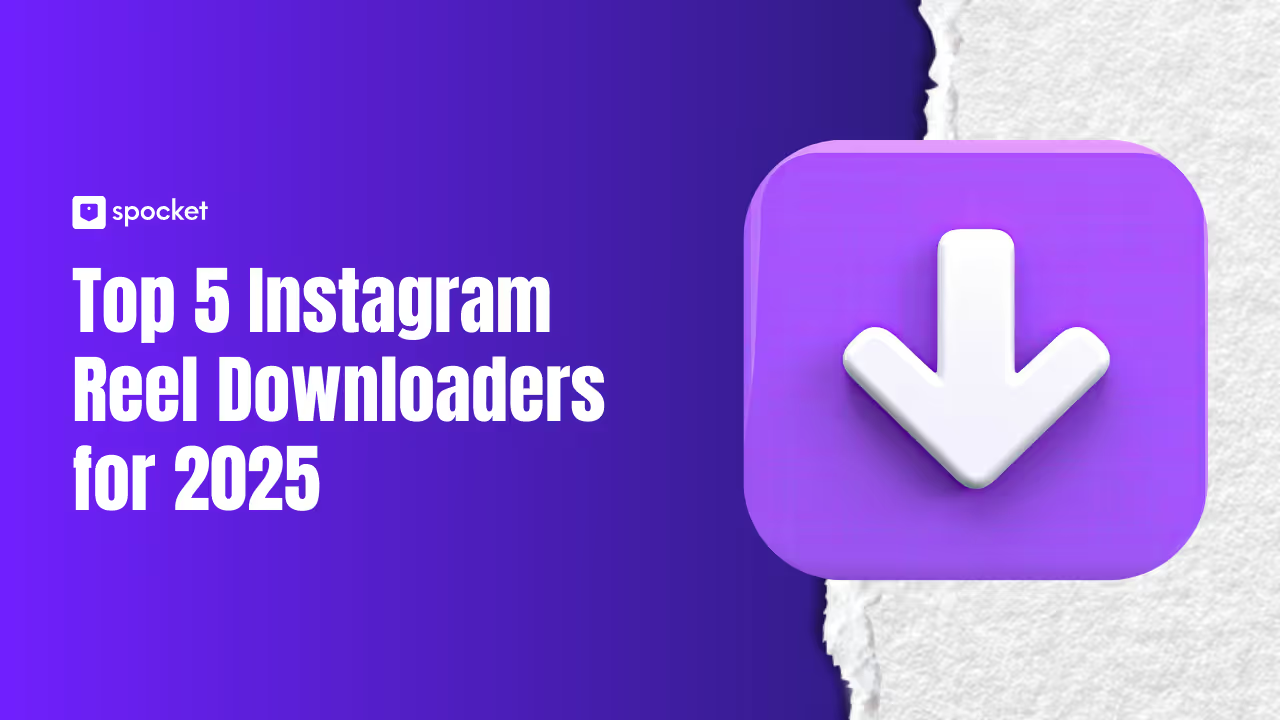Die Titelseite Ihres Dropshipping-Shops könnte so aussehen:

Aber stattdessen sieht es so aus:

Und wenn Sie sich fragen, was Ihren Umsatz ruiniert, liegt die Antwort auf der Hand. Die Homepage ist ein echtes Werbegeschenk für Kunden über die Zuverlässigkeit und Benutzerfreundlichkeit Ihrer Marke. Diese Homepage oben schreit nach „Betrug“ oder „Unzugänglichkeit“. Beides sind schlechte Nachrichten für Ihre Marke.
Wenn Sie der Meinung sind, dass ein Kunde ein Produkt einfach direkt auf der Produktseite auschecken und niemals zu Ihrer Rezeption gehen wird, lassen Sie mich Ihnen sagen: 30% aller Sessions landen auf Ihrer Landingpage. Obwohl eine Produktseite für Ihren Online-Shop extrem wichtig ist, unterschätzen Sie NICHT Ihre Homepage.
Die Homepage einer Website hat vier Hauptfunktionen:
1. Orientieren Sie den neuen Besucher.
2. Stellen Sie die Identität Ihrer Marke her.
3. Bieten Sie eine einfache Navigation zu allen Teilen Ihrer Website.
4. Gewinnen Sie wiederkehrende Besucher mit neuen Inhalten.
Bevor Sie Ihrer Titelseite ein Element hinzufügen, fragen Sie sich: Stimmt das mit meinem Markenimage überein? Hilft es dem Zweck der Homepage, also die Leute dazu zu bringen, den Konversionstrichter weiter nach unten zu bewegen? Verwirrt es Ihre Besucher?
Wenn Sie der Meinung sind, dass ein Kunde ein Produkt einfach direkt auf der Produktseite auschecken und niemals zu Ihrer Rezeption gehen wird, lassen Sie mich Ihnen sagen: 30% aller Sitzungen enden auf Ihrer Landingpage. Eine Produktseite ist zwar extrem wichtig für Ihren Online-Shop, aber unterschätzen Sie NICHT Ihre Homepage. „Du verwendest besser Webdesign-Tools die Ihnen helfen, die beste Homepage und Benutzererfahrung zu schaffen.“
Höchstwahrscheinlich gibt es Elemente auf Ihrer Homepage, die nicht zu Ihren Gunsten funktionieren.
Hier sind 13 Gründe, warum Ihre Titelseite schlecht ist und was Sie tun können, um sie zu verbessern.
Es ist vollgestopft mit Hunderten von Produkten.
Warum würdest du das tun? Ihr Online-Shop ist kein Flohmarkt oder Flohmarkt. Sicher, Sie können einige Ihrer besten Produkte etwas weiter unten auf Ihrer Titelseite hinzufügen - aber der gesamte Katalog ist ohne Rätsel ausgestellt?
Nee.
Machen Sie es sauber — geben Sie einen Überblick über Ihre Marke. Stellen Sie sich vor, engagieren Sie sich und zeigen Sie den Besuchern, welche Art von Produkten Ihre Website hostet.
Erstellen Sie visuelle Kacheln mit Produktkategorien. Geben Sie den Kontext an.
Sicher, Sie haben großartige Produkte und es scheint, als ob Sie diese Produkte im Voraus zeigen, um sie zu verkaufen.
Besucher zu bitten, ihr hart verdientes Geld auf der Titelseite selbst auszugeben, ist jedoch eine zu große Anfrage.
Margaux, die Schuhmarke, stellt uns ihre Schuhe vor, indem sie zunächst erklärt, wofür sie stehen und was ihre Produkte auszeichnet. Ich muss sagen, es ist ziemlich überzeugend.

Und dann haben Sie die Möglichkeit, an einem Größenquiz und einem Style-Quiz teilzunehmen. JEDER liebt Quizfragen. Am Ende des Quizzes erhalten Sie ein personalisiertes Produktset, das Sie kaufen oder für später speichern können.
Wie cool ist das?

Das ist Engagement.
Sie müssen zwar nicht so viel unternehmen, um Ihre Besucher anzusprechen, Du kannst damit beginnen, Hallo zu sagen und zeigt einen Überblick darüber, was Sie verkaufen. Verkaufen Sie Bekleidung? Erzählen Sie weiter, welche Arten von Bekleidung Sie verkaufen und warum Ihre Produkte etwas Besonderes sind.
Diese Grafiken und Farben haben uns einfach die Augen verbrannt.
Warum der schockierende rosa Hintergrund? Warum der rote Text?
Wir lieben Farben genauso wie die nächste Person, farbige Hintergründe erschweren jedoch das Lesen von Texten und erschweren die Verarbeitung von Informationen.
Es ist um 100% wahrscheinlicher, dass ich von einer Website abpralle, wenn sie eine schreckliche Hintergrundfarbe hat.
Würden Sie etwas von einer Website kaufen, die so aussieht?

Dies kann zwar dazu führen, dass Sie auf viele Listen mit den „schlechtesten E-Commerce-Websites“ kommen, aber Sie werden große Probleme haben, das Vertrauen Ihrer Besucher zu gewinnen. 46% der Besucher beurteilen Ihre Glaubwürdigkeit anhand Ihrer Homepage.
Wenn Sie andere Farben als Weiß oder Schwarz verwenden müssen, wählen Sie Pastellfarben. Vermeiden Sie es, die Seite mit zu vielen Elementen zu überfüllen — verwenden Sie Leerraum gut!
Femme & Fierce verwenden die Farbe Pastellrosa/Pfirsich effektiv:

Eine weitere Sache, die es hier zu beachten gilt, ist der Call to Action: Lass ihn auffallen! Nutze dafür ein Unterscheidungsmerkmal: Achte darauf, dass es sich vom Rest des Hintergrunds abhebt. Jede Kachel der Kategorie sollte ebenfalls anklickbar sein.
Die Messlatte ist zu niedrig angesetzt.
„Es sollte Spaß machen, ewig nach diesem speziellen Produkt zu suchen, das ich in den sozialen Medien gefunden und jetzt verloren habe“, sagte noch nie jemand.
Niemand hat die Zeit, nach unten zu scrollen und Ihren gesamten Shop nach dem einen Produkt zu durchsuchen, nach dem er sucht. Wenn ein Besucher nach schwarzen Kopfhörern sucht, sollte es für ihn eine einfache Möglichkeit geben, diese in Ihrem Geschäft zu finden.
Überraschenderweise wurde eine Erfindung gemacht, um es einfach zu machen: die Suchleiste.
Obwohl die meisten Geschäfte über Suchleisten verfügen, um eine einfache Eingabesuche zu ermöglichen, ist die Suchanfragen sind oft ungenau oder unwirksam. Wenn Sie Umsatz verlieren, nur weil Ihre Suchfunktion keine Flaschen gefunden hat, nur weil Ihr Besucher Flaschen eingegeben hat, ist das ein gewisses Problem.
Kennzeichnen Sie Ihre Produkte gut, sodass Suchanfragen, die etwas unkonventionell sind, auch dann angezeigt werden, wenn Besucher danach suchen.
Der New Craftsman hat eine Suchfunktion, die absolut auf den Punkt gebracht wird:

Die Navigationsleiste ist unübersichtlich (oder existiert nicht).
Online-Händler verfügen häufig über eine Navigationsleiste, die jedoch entweder zu überladen ist oder den Besucher nicht zu den Informationen führt, die er benötigt.
Die 6 Grundelemente einer Navigationsleiste sind:
- Geschäft
- Blog
- Über uns
- FAQ
- Suche
- Einkaufswagen
Ein Drop-down-Menü für den Shop-Bereich ist eine ausgezeichnete Wahl.
Gehen wir zurück zur Startseite von The New Craftsmen und schauen uns die Navigationsleiste und das anschließende Menü an.

Dies ist die perfekte Kombination aus informativ und sauber. Zu viele Menüpunkte, und die Besucher werden überwältigt sein. Zu wenige — sie werden keinen klaren Weg haben, dem sie folgen können.
Der Abschnitt Über uns ist unglaublich nützlich für jedes Dropshipping-Unternehmen, das eine Markenidentität aufbauen möchte, und der Blog bietet Besuchern kostenlos einen Mehrwert, sodass Sie wie ein vertrauenswürdiger, hilfsbereiter Freund erscheinen!
Online-Shopping gibt Ihnen nicht die Freiheit, mit Ihrer Zielgruppe zu sprechen und ihnen zu helfen, wenn sie verwirrt ist. Lassen Sie sich dadurch nicht von Ihrem Umsatz abbringen: Stellen Sie den Kunden einfach eine Navigationsleiste zur Verfügung, die nützlich genug ist, um Self-Service zu ermöglichen.
Sie haben keine Kategorien. Eine Nadel im Heuhaufen, viel?
Dies knüpft an ein früheres Anliegen an, das wir hatten: herumliegende Produkte, nicht kategorisiert, unsortiert. Es ist eine Verschwendung von Zeit und Mühe, sich durch eine Reihe von Produkten zu bahnen, die nicht den eigenen Bedürfnissen entsprechen. Der Online-Kauf- und Verkaufsprozess muss optimiert werden, wenn Sie als Einzelhändler erfolgreich sein wollen.
Erstellen Sie Kategorien für Ihre Produkte: Selbst in einer kleinen Nische gibt es Produkte, die sich unglaublich voneinander unterscheiden und daher aus Gründen der Benutzerfreundlichkeit getrennt werden müssen.
If you sell shirts, separate them into categories based on the cloth they are manufactured with: your customers will appreciate the attention you have paid to the products you sell, and this will mark you as someone who genuinely knows what they’re selling.
The drop ship business is flooded with merchants who do not invest enough effort to understand the product and the customer. Be different.
In fact, I recommend that you create curated collections that revolve around a singular season or colour.
The Horse.com has collections specially created for ‘Gifts for him’ and ‘Gifts for your favourite person’ and we love it:

Your copy made us fall asleep.
Competition is fierce, and you have to put your best foot forward: lazy writing or poor grammar is not going to cut it.
If you are catering to the US market, your syntax and grammar have to be impeccable to be viewed as a trustworthy, legitimate business. If you have products on your front page, and you are still using product descriptions that the dropshipping supplier provided, that is going to be a hard no for most customers.
But grammar is just the bare minimum. You have to write copy that incits action: words that elicit a response and practically invite the visitor to click on the CTA.
Optimizing your landing page is about cleaning up every element and extracting its full potential: your copy is your conversation with the audience, so you cannot afford to be dull. This is your chance to start selling them on the benefits of your product.
For example, here’s how Buffy, the comforter company hooks us in:

The headline uses vivid imagery, and coupled with the photo that exudes comfort, visitors are tempted to at least try the product.
Your live chat bot is impatient.
Customer support. Yep. It runs the electronic commerce industry, and bad customer support experiences have a supremely terrible impact on the company. No doubts there.
Buuuut, when your support bot constantly pops up at no request by the visitor, it soon turns into a distraction.
Have you ever gone into one of those stores where an employee constantly follows your around as you browse through the aisles? You’re almost nose-to-nose with them when you turn, and they will not leave you alone.
If yes, you know what I am talking about. If no, IMAGINE that.
Sounds unpleasant, right?
Exactly.
Your visitors are smart enough to recognize the chat icon--they do not need reminders at every moment. Take it easy. Let the bot make its presence felt, and then lie low!
Pop-ups. Please stop.
This is in continuation with our previous complaint with your store: your chat box might just end up being another pop-up.
Then there’s a ‘Kathy from New Zealand just bought..’ pop-up and a ‘Give us your email address’ pop-up and a ‘Here’s a 50% discount coupon’ pop-up and suddenly you have way too many pop-ups.

When your site starts looking like this, you’ve got a problem.
Actually, erase that. If you have more than two pop-ups going live, shake it up.
The first pop-up should be triggered at least a few seconds after a customer has landed on your site--as they would need time to orient themselves to your store and get to know you before handing you information about themselves.
We have no idea what you are selling or who you are.
Your landing page should not be shrouded in mystery; it should give a clear statement of what your brand sells and why it fairs better than the competition. Most general dropshipping stores have a collection of products on the front page with no thread tying them together.
Even when a store is a general one, there must be a cohesive principle that it stands for.
Second, the lack of an about page prevents the visitor from understanding your story and the motive behind the store. In the age of influencers and personal brands, you do not want to remain faceless. People want to connect to shops on a level above basic consumerism, and you, as a retailer are better off providing the means to do so.
FEED’s About Page forges a relationship between the audience and the brand, which makes a purchase more likely:

Keep it simple. Keep it accessible.
Third, where does the visitor find essential information such as shipping costs and time and where your products are from and other questions that might crop up before giving you money?
Have a page dedicated to FAQs and general inquiries, so you can keep customer support to a minimum!
The images take FOREVER to load.
And they’re just bad stock photos.
Images are key to making a visitor hang on to your site. If the first image they see is simply your product against a white background, they are not going to be impressed. There are a number of free high definition photo sites that allow you to use images for free--here are a few, listed below:
People want to see real humans interacting with a product. They want to see something new.
It is also relatively easy to make sure your images are compressed and resized to avoid 15 hour loading times. If your images never load, you can be sure that your bounce rate is going to be high, and your conversion rate low.
I get it. Not all of us can afford photoshoots with models to showcase our products, but what you can do is create a snazzy mix of the photos you download from the sites stated above and awesome copy.
This is what you can go for:

You have not optimised for mobile.
If you want to optimise the landing page for your visitors, let me tell you: by 2021, 54% of all ecommerce is predicted to shift to mobile.
Now mobile optimisation does not mean making things look great on mobile (although that would be excellent). The real optimisation we are speaking about requires answering the following questions:
Is your navigation bar accessible on mobile devices, and if yes, does it collapse into a fixed header? You certainly do not want it taking up half of your screen space.
Do your images resize to fit mobile screens, or does the user have to do a series of aerobatics to view your products?
Is it possible for the user to view the entirety of their cart, complete with the prices and the product on mobile, or do they have to slide across to get the full picture?
Just say no to pop-ups. Pop-ups and mobile devices do not gel well together.
Are your buttons big enough for fat thumbs?
Flash-native videos and audios do not work on mobile devices--you sure you aren’t relying on those for your website?
With these in mind, your ecommerce home-page will be as optimized as it gets! Let us know if there are other annoying things that homepages of online stores often do that kill your vibe: we’d love to include them in our next article!







































